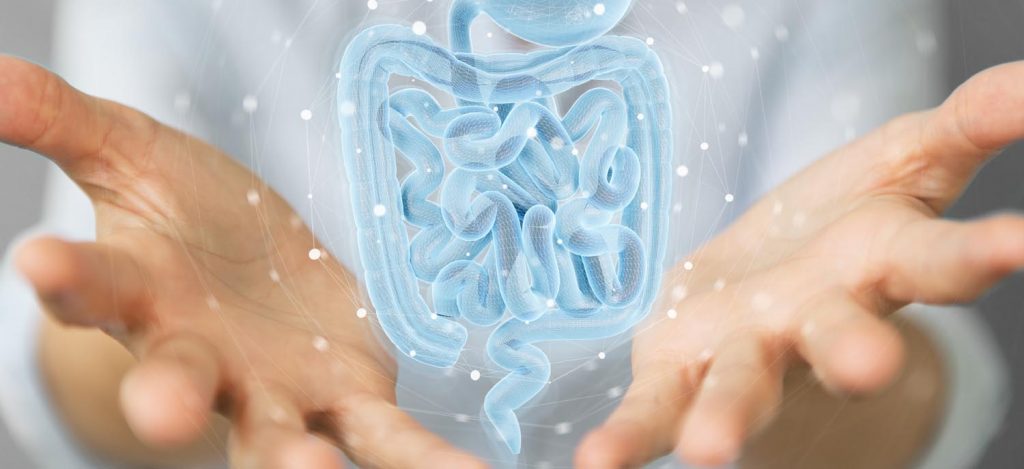Visceral massage is a massage therapy that focuses on the most complex and miraculous parts of our anatomy; the internal organs of our body or as it can be described, the Gut.
Visceral Manipulation has come to prominence in the last three decades in the West mainly due to the books by French osteopath Jean-Pierre Barral. However, visceral massage and visceral manipulation has its origins in Eastern medicine with the Taoist Chi Nei Tsang (translated as; transformation of old energy stored in the viscera). Chi Nei Tsang believes that this stored energy may include undigested emotional charges and traumas seated in the past which are waiting to be processed. This relationship between the physical digestive process via the organs and the presence of emotional energy is also witnessed in the TCM approach where the central principle is the classification of five major organ systems that are each associated with particular emotions; the liver and gallbladder are associated with anger, the heart and small intestine are associated with joy, the spleen and stomach are associated with over-thinking or procrastination, the lungs and large intestine are associated with grief, and the kidneys and bladder are associated with fear.
Barral’s writings briefly mention the relationship between the TCM approach in relation to visceral massage by citing Oriental health practitioners who recognize that energy flows through the body and reaches its zenith in specific organs and/or acupuncture channels. Alison Harvey, one of Barral’s students, does take this relationship a little further in her book, ‘A Pathway to Health’ by outlining similar relationships between the organs and emotions. It should be noted that there is some disparity between what Harvey believes are the emotions linked to particular organs as opposed to the assertions made by the Taoist and other TCM practitioners. For example, in the Taoist Emotions Creation Cycle the stomach is linked to fairness, openness and trust, but Harvey cites the stomach from Barral’s research as extroversion, focus on the future and poor self-esteem.

Perhaps this ‘inconsistency’ in claims has led to the type criticism levelled by some, including physiotherapist, Harriet Hall, who wrote in ‘Science-Based Medicine’ that claims of therapeutic benefit from visceral massage were mere ‘fantasy.’6 But they are not fantasy; The European Journal of Pain suggests that the use of visceral manipulation might be useful in the long-term management of lower back pain. While the short-term benefits weren't obvious, those undergoing visceral massage did show benefit over a longer duration, prompting the authors to suggest that, "It is possible that, with continuing visceral nociceptive input, control patients experienced greater rates of recurrences of LBP compared with the visceral manipulation group." 7
This isn't the only study to find clinically meaningful benefits following the use of visceral massage as part of treatment for lower back pain. A paper by McSweeney et al in 2012 examined the immediate effects of sigmoid colon massage on pressure pain thresholds in the lumbar spine. Results from this study demonstrated a statistically significant improvement in pressure pain thresholds immediately after massage intervention. This study provides new experimental evidence that visceral manual therapy can produce immediate hypoalgesia in somatic structures segmentally related to the organ being massaged, in asymptomatic subjects." 8 In my own practice, visceral massage techniques focused on the ileocecal valve have also had the effect of reliving lower back pain in some clients. Possibly the most striking results have occurred following visceral massage techniques on the small and large intestine of a client suffering from constipation caused by a range of ‘binding’ pharmaceutical medications.

Finally, for those EBM (Evidence Based Medicine) massage therapists who may be emotionally invested in the scientific paradigm, I would offer the intriguing paper, ‘"You May Need a Nerve to Treat Pain - The Neurobiological Rationale for Vagal Nerve Activation in Pain Management." 9 In this article De Couck and colleagues reviewed the role of the vagus nerve in modulating pain signals, discussing five distinct mechanisms by which it exerts inhibitory effects upon the pain experience. They wrote,
"The vagus nerve may play an important role in pain modulation by inhibiting inflammation, oxidative stress, and sympathetic activity, and possibly by inducing a brain activation pattern that may be incongruent with the brain matrix of pain. Finally, vagal activation may mediate or work in synergism with the effects of the opioid system in pain modulation. All these mechanisms are thought to influence neuronal hyperexcitability, culminating in the perception of less pain. For all the above neurobiological reasons, it seems justified to increase vagal nerve activity to reduce pain as this targets all 5 mechanisms with 1 intervention. This hypothesis is supported by experimental studies on animals and preliminary intervention trials on humans." 10
The vagus nerve has been used experimentally to influence pain in a variety of ways; deep breathing will augment vagal activity and has been shown to reduce pain. (Coincidentally, the training I offer visceral massage students includes a focus on breath transference) In all cases, it appears that vagal stimulation influences central pain processing, rather than peripheral nociceptor activity. Could it therefore be that visceral massage, as performed by trained massage therapists serve as a useful form of vagal stimulation?
There are also clear links between this research and study by neuroanatomist Bud Craig who provides clinical evidence regarding the relationship between viscera and the area of the brain called the insular cortex. Craig spent nine years studying the neural pathways from viscera to the anterior insular cortex.11. His claim is that insular function will enable deep insights into the neural basis for subjectivity, feelings, volition, individual personality, belief, and self-modulation. He may have rediscovered what has been identified by Chi Nei Tsang and other traditional healers using visceral massage centuries before;
‘Usually, and in all fields, best practice preceded evidence-based practice by years, in some cases many years. In our field, it’s hard to think of a single technique that was developed by researchers, then promulgated from the research community out into the traditional therapists’ community’. 12
I maintain that Visceral Massage is a metaphysical experience paralleled by biological responses. There is a running dialogue between the gut and the brain that the experienced massage therapists can facilitate a positive conversation between both.
This article addresses some of the science, and ancient art connected with visceral massage therapy, however there are many more components to understanding how therapeutic massage techniques can address the sensitive digestive system and the emotions related to the brain-gut connection. Visceral massage is part of both functional medicine and ancient traditional therapy. It is an emerging therapeutic area for us in clinical practice addressing conditions such as IBS, lower back pain and a full range of both gut issues and emotional concerns.
References
1.Lamar C, Chinese Stomach Massage http://www.bodyandsoul.com.au/health/natural+health/chinese+stomach+massage,10175 accessed 18.6.2016
2. htp://www.sunherbal.com/basic-page/understanding-organs-chinese-medicine accessed 19.06.16
3. Barral J, Mercier,Visceral Manipulations, (2005) p.10 Eastland Press
4. Harvey A, A Pathway to Health. How Visceral Manipulation Can Help You. p. 193 – 204 North Atlantic Books, Berkley, California
5. www.universal-tao.com accessed 22.06.16
6. Hall H, posted in Science Based-Medicine 17.1.12
7. Panagopoulos, J., Hancock, M. J., Ferreira, P., Hush, J., & Petocz, P. (2014). Does the addition of visceral manipulation alter outcomes for patients with low back pain? A randomized placebo controlled trial. European Journal of Pain, n/a–n/a. doi:10.1002/ejp.614
8. McSweeney, T. P., Thomson, O. P., & Johnston, R. (2012). The immediate effects of sigmoid colon manipulation on pressure pain thresholds in the lumbar spine. Journal of Bodywork and Movement Therapies, 16 (4), 416–423. doi:10.1016/j.jbmt.2012.02.004
9. De Couck, M., Nijs, J., & Gidron, Y. (2014). You May Need a Nerve to Treat Pain. The Clinical Journal of Pain, 30 (12), 1099–1105. doi:10.1097/AJP.0000000000000071 in Keeping an Open Mind by Dr Mathew Long (di.edu.au/clarity/keeping_an_open_mind.php)
10. Busch, V., Zeman, F., Heckel, A., Menne, F., Ellrich, J., & Eichhammer, P. (2013). The effect of transcutaneous vagus nerve stimulation on pain perception – An experimental study. Brain Stimulation, 6 (2), 202–209. doi:10.1016/j.brs.2012.04.0061
11. Craig, AD (2009). How do you feel –now? The anterior insular and human awareness. NAT REV NEUROSCI, 10 (1): 59-70, JAN
12. Conversation with Kit Laughlin, Stretch Therapy author and world presenter on stretching and flexibility. 8.6 2016

